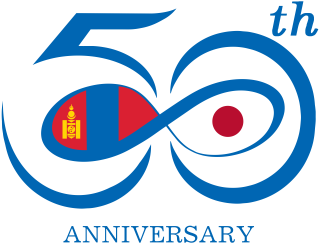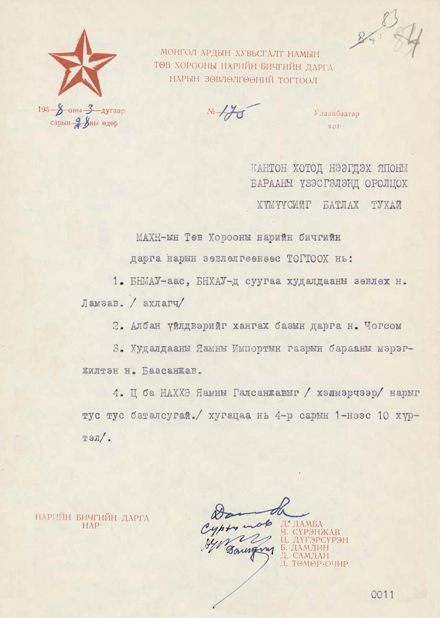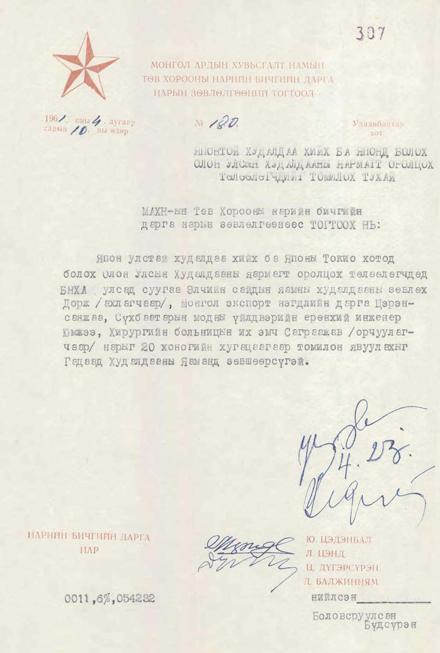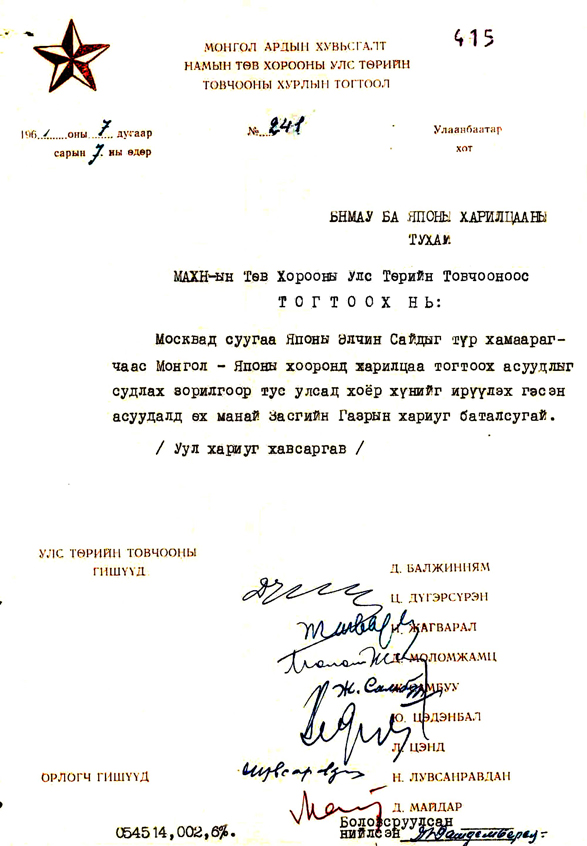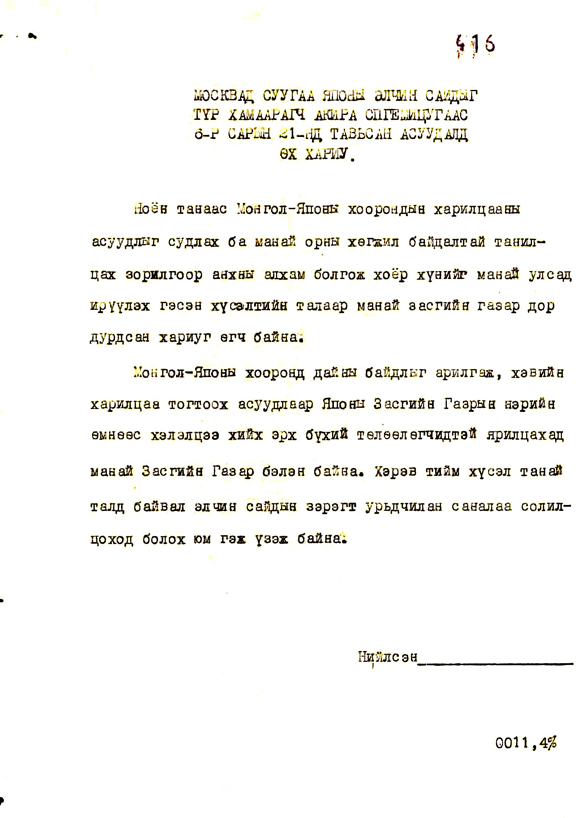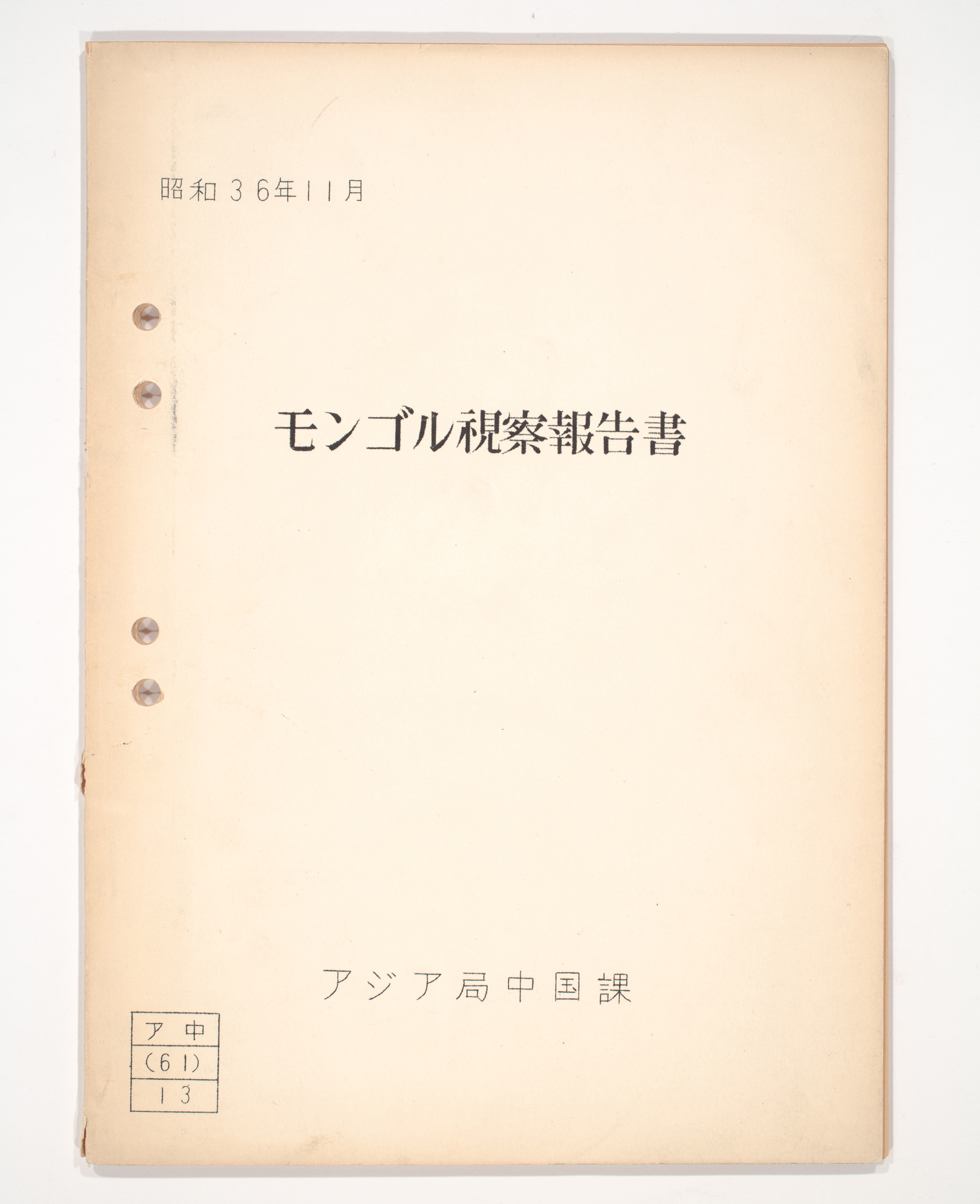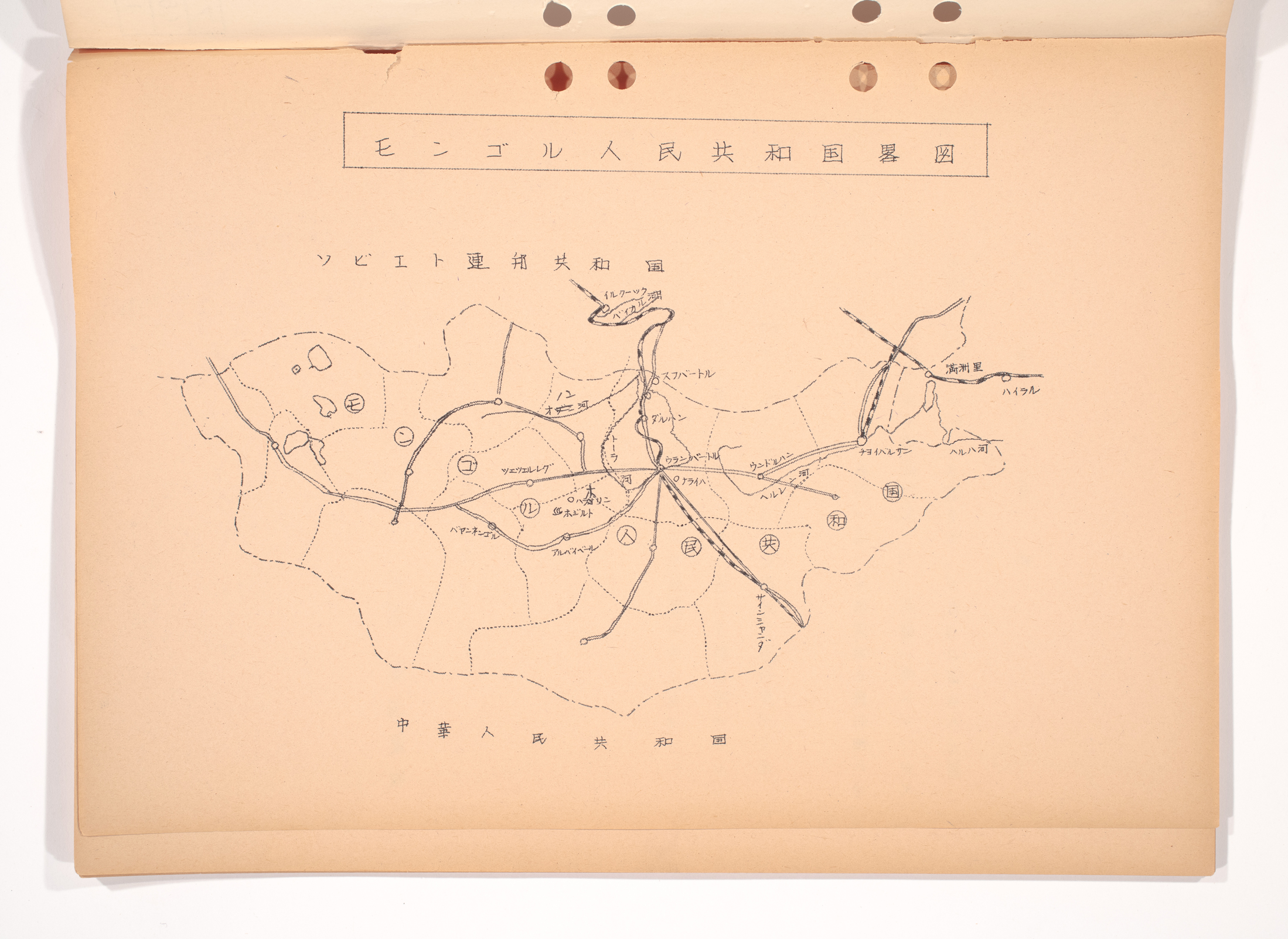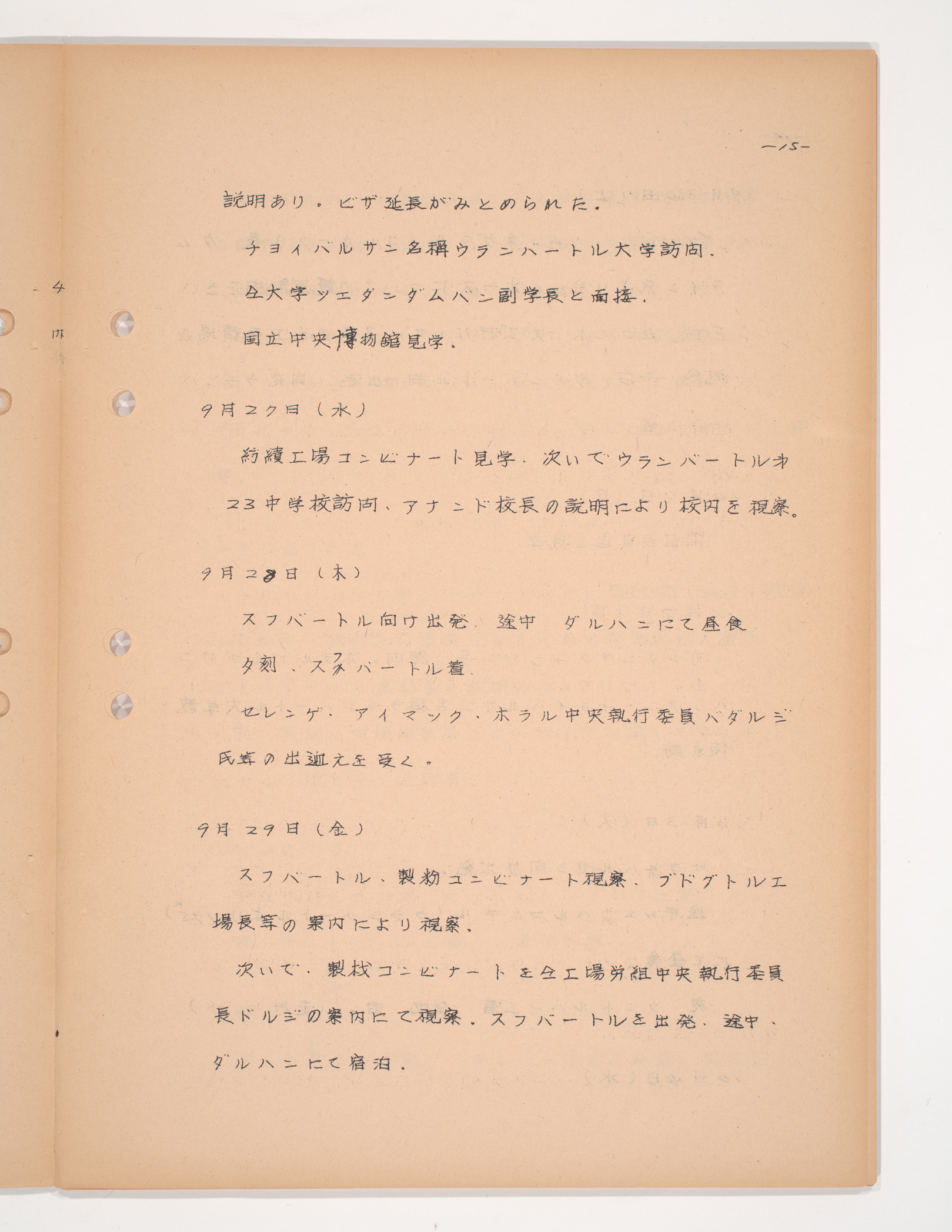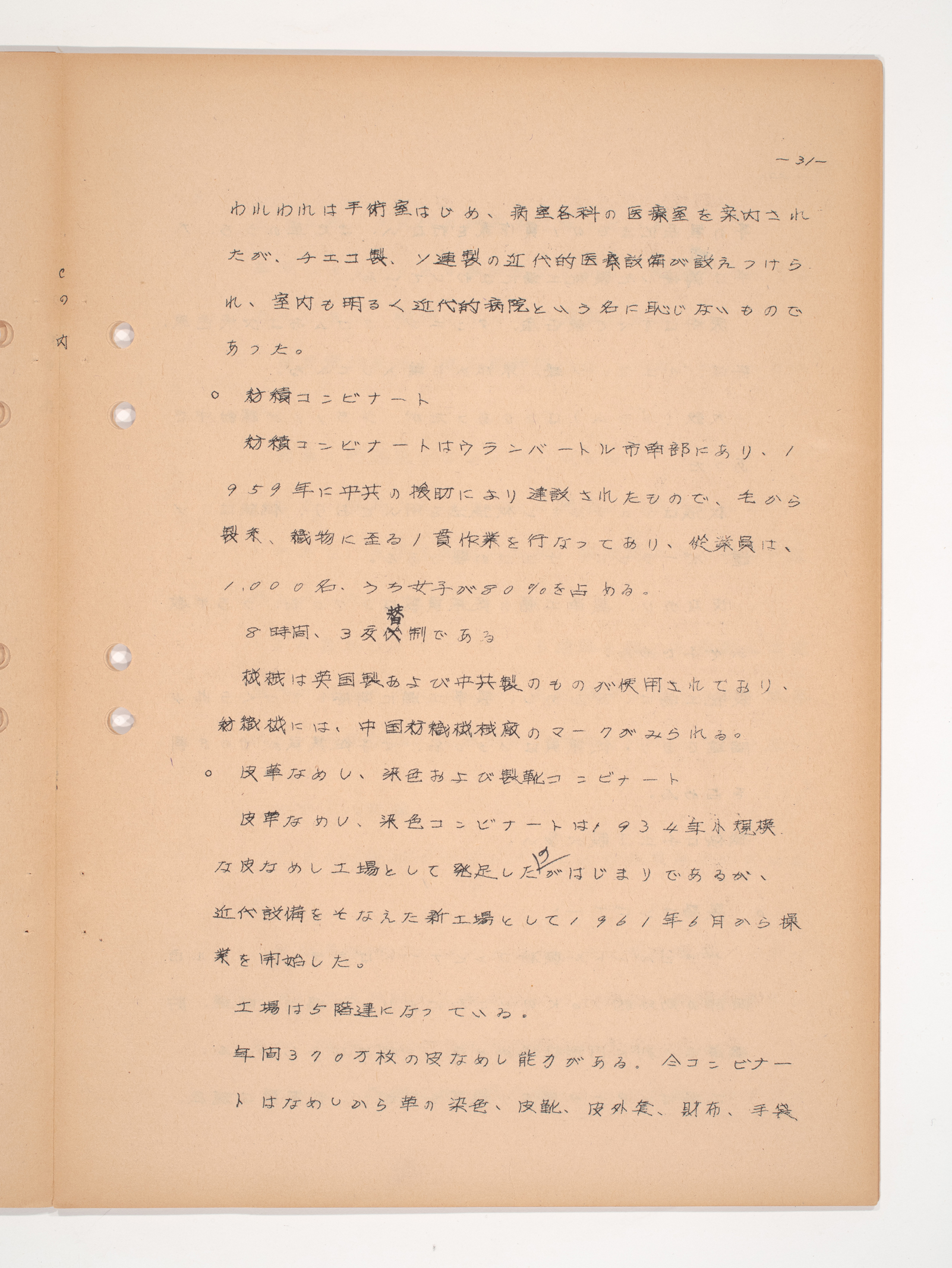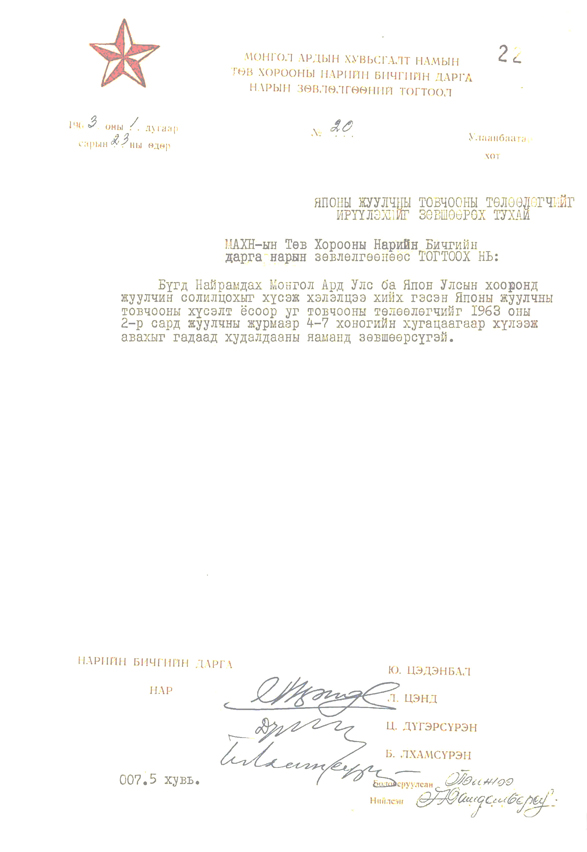ⅣCultural exchanges in the post-war period
(1950–60s)
After World War II, cultural and economic exchanges began between Japan and Mongolia. Memberships in international organizations such as WHO, UNESCO (both in 1951 for Japan and in 1962 for Mongolia), and the United Nations (in 1956 for Japan and 1961 for Mongolia) provided opportunities for mutual exchanges. In addition, international events such as the visit to Japan of the Mongolian delegation to the World Conference Against Atomic and Hydrogen Bombs from 1957, and participation in the Tokyo Olympic Games in 1964, as well as the initiatives of private associations and organizations, have deepened exchanges among peoples on both sides.
Exhibitions of works by Japanese painters such as MARUKI Iri and AKAMATSU Toshiko were held in Mongolia. From the Mongolian side, cultural and scientific activists from Mongolia, including Tsendiin Damdinsuren, a linguist and author, and Bazariin Shirendev, a member of the Mongolian Academy of Sciences, visited Japan.
Trade
 Participating in a Trade Fair in Guangdong Province in Search of Japanese products
Participating in a Trade Fair in Guangdong Province in Search of Japanese products
According to the resolution No. 175 of the Council of Secretaries of the Mongolian People’s Revolutionary Party (MPRP) Central Committee dated March 28, 1958, Lamjav, a trade advisor from the People’s Republic of Mongolia to China, Chogsom, the head of the official supply base, Baasanjav, an import specialist from the Ministry of Commerce, and Galsanjav from the Ministry of Industry and Trade were approved to participate in the exhibition in Guangdong.
This is an evidence that Mongolians used and utilized Japanese goods.
 Participation of Mongolian delegations in international trade fairs in Japan
Participation of Mongolian delegations in international trade fairs in Japan
On April 10, 1961, the Ministry of Foreign Trade approved the following delegates to participate in international trade fairs in Tokyo, Japan:
- Dorj, Trade counselor at the Embassy in China
- Tserensanjaa, head of the Mongolian Export Cooperative
- Yumjee, Chief Engineer of the Wood Factory in Sükhbaatar
- Sagraajav, a doctor at the surgical hospital
Exchange of people
 Approval for sending Japanese government staff to the People’s Republic of Mongolia
Approval for sending Japanese government staff to the People’s Republic of Mongolia
This document, dated on July 7, 1961, states that SHIGEMITSU Akira, Chargé d’Affaires of the Embassy of Japan in Moscow, said that the Japanese Government was ready to hold discussions with Mongolian officials, as well as requesting permission to send two secretaries to Mongolia at first for the purpose of studying the issues of Mongolian-Japanese relations and to become acquainted with the development of Mongolia.
 Report of the visit to Mongolia by Japanese officers of the Ministry of Foreign Affairs
Report of the visit to Mongolia by Japanese officers of the Ministry of Foreign Affairs
The Japanese government had long considered how and when to approach Mongolia for an inspection of Mongolian situation.
In 1961, MUTO Toshiaki, a secretary at the Embassy of the Netherlands in The Hague, and AKIHO Mitsutaka, a secretary at the Embassy of the Soviet Union in Moscow, visited Mongolia with a tourist visa for Outer Mongolia to observe the current situation. They stayed in Ulaanbaatar, Sükhbaatar, Choibalsan, and other areas for a month (September 24 to October 23, 1961).
This material is the report of the visit by both secretaries.
The purpose of this visit was to investigate the economic situation of the Third Five-Year Plan (1961–1965) in Mongolia, the distribution of daily commodities in various parts of Mongolia, foreign exchange systems, and housing conditions.
In the report of the visits to various sites including a spinning complex, the two secretaries noted the remarkable development of the Mongolian national economy. It is also mentioned that throughout their stay in Mongolia, they did not observe anti-Japanese sentiment among the government and people of Outer Mongolia, but rather, Mongolian people showed a sense of familiarity.
 Receiving delegations of an association for the exchange of tourists
Receiving delegations of an association for the exchange of tourists
As per the request of the Japanese Tourist Bureau to hold negotiations on exchanging tourists between Mongolia and Japan, the representatives were approved to be received as tourists for 4-7 days in February 1963.

